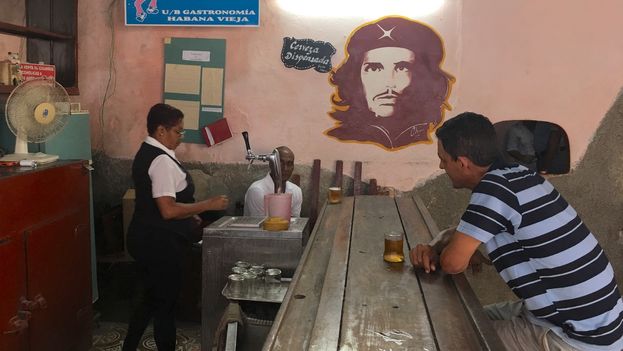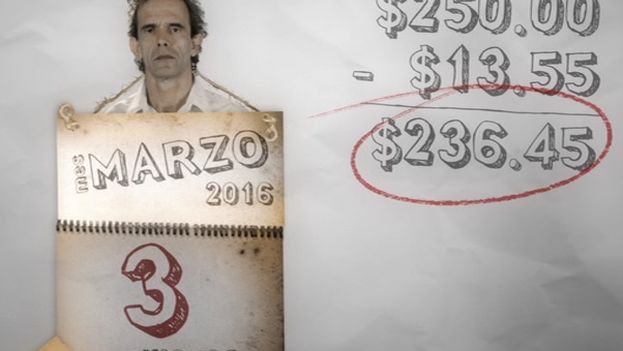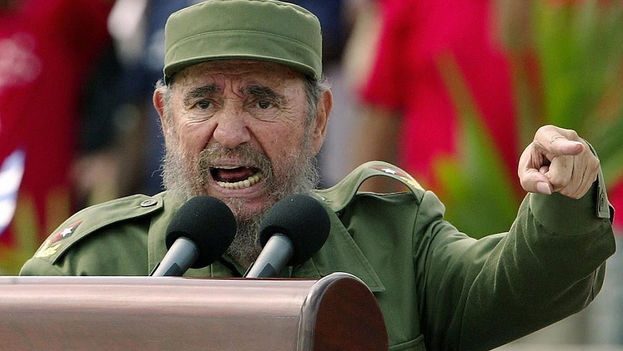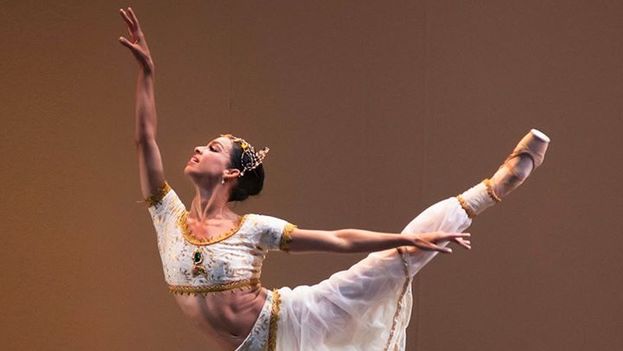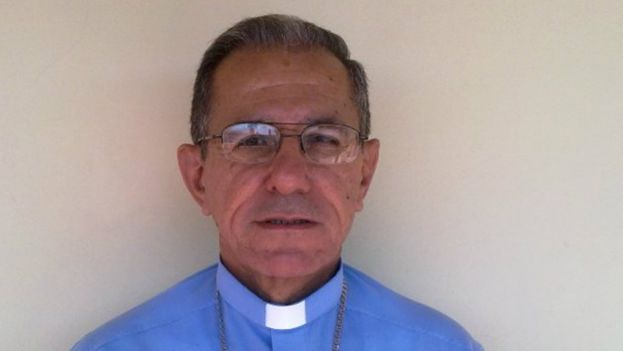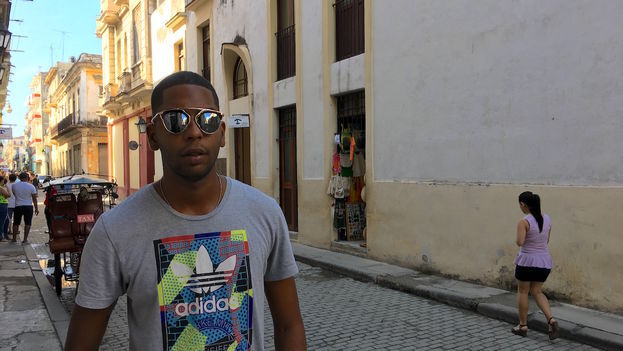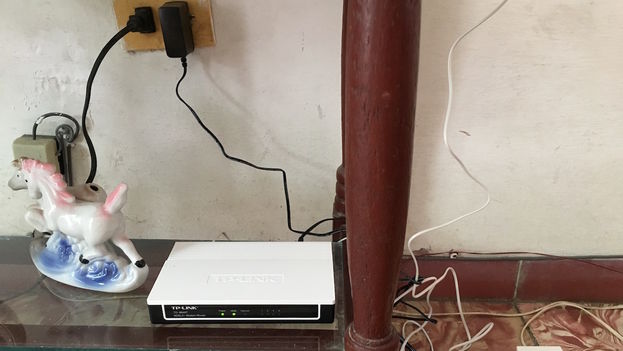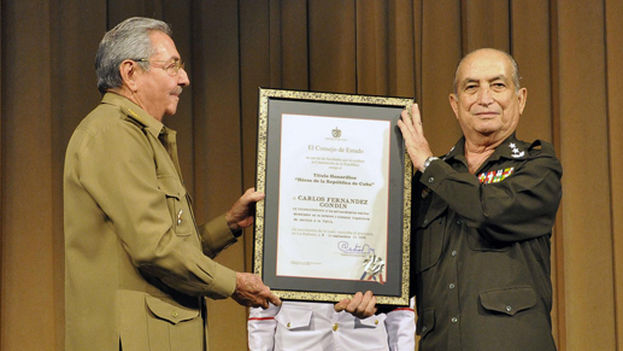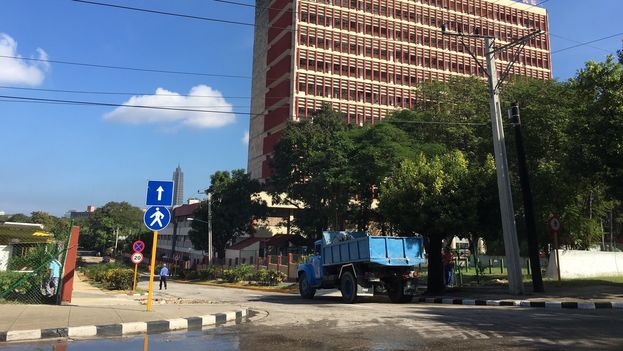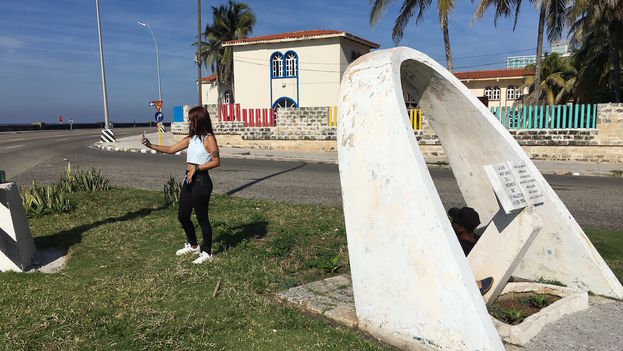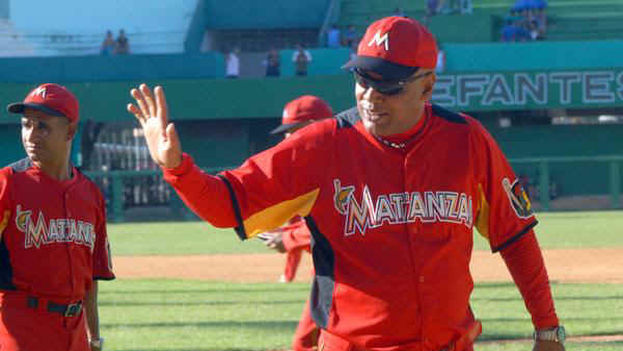His death, at age 78, came as no surprise to anyone. The official note says he died “because of complications of a chronic illness,” and on June 6, at the celebration of the creation of the Ministry of the Interior, he did not appear on the cameras of national television, something that fanned the rumors about his state of health.
The powerful ministry he led controls the police, immigration and aliens, prisons and the omnipresent State Security, among other departments. Gondín arrived at the top of the institution thanks also to the perfect fidelity he always showed towards Raul Castro, under whose orders he fought in the Second Eastern Front in the years of the fight against Batista. continue reading
Gondín made his career in the Cuban army, graduating from the Matanzas School of War and was later selected to study at the Soviet Union’s Frunze Academy. He participated in the military adventures in Angola and Ethiopia, reaching the position of second in command of Cuban troops in Angola.
The powerful ministry he led controls the police, immigration and aliens, jails and the omnipresent State Security, among other departments
From 1980 he sat on the Central Committee, the highest organ of the Communist Party of Cuba which decides the number of members of the Politburo, the maximum circle of power in the nation. He was also an elected member of Parliament as of the seventh legislature.
In 1989, MININT’s leadership was purged and Fidel Castro named Abelardo Colome Ibarra, known as Furry, as interior minister while Gondín became the first deputy minister. Both had worked together since in 1978 when Gondín was named to head the Counterintelligence Directorate of the Armed Forces
“He was a man of the Armed Forces who came to MININT at a time when it was purged of its more open and reformist elements,” political scientist and historian Armando Cuban Chaguaceda told 14ymedio from Mexico.
According to the academician, there has always been a rivalry between the Ministry of the Interior and the Revolutionary Armed Forces that climaxed with the conviction of General Arnaldo Ochoa and 13 others accused of getting rich through drug trafficking operations in 1989.
“The MININT apparatus has more sophisticated people than the military. There are many people dedicated to analyzing, to thinking, especially those who are in contact with the outside,” explains Chaguaceda. He believes that Gondín’s death will not affect the current policy on the island. “Until proven otherwise it is more of the same,” he says.
Gondín was also known for being a meticulous man, who knew how to stay in the shadows. He was considered the eminence grise after the political repression during the mandate of Furry. Several dissidents point to the recently deceased military man as the main organizer of the arrests, house arrests and strict surveillance against opponents, especially against the Ladies in White.
Gondín was also known for being a meticulous man, who knew how to stay in the shadows. He was considered the eminence grise after the political repression during the mandate of Furry
However, shortly after assuming the position of minister, Gondin suffered a stroke that left him unable to perform his duties. Since then and to date, Cuba’s most powerful ministry has been under the command of Vice Admiral Julio Cesar Gandarilla Bermejo, first deputy minister of the Ministry of the Interior who comes from the Ministry of the Armed Forces Military Counterintelligence arm.
The analyst Julio Aleaga, author of a study about who’s who in Cuban national politics, told 14ymedio that Gondín’s time in management was “very short” and when he was named to the post “it was already known that he was a sick man.” When asked who will fill the vacancy, he points to Gandarilla Bermejo, who has completed missions in 11 countries, including Angola, and who is also a septuagenarian.
Aleaga discards the idea that Alejandro Castro Espín, son of the current ruler, and a man whom many point out as possible replacement, will be placed at the front of the ministry. “If they were preparing Alejandro to ascend in the control of the dynasty, he would hold a position at another level, not in the Ministry of the Interior,” he says.
For his part, Juan Antonio Blanco, executive director of the Cuban-based Foundation for Human Rights in Cuba, is skeptical about the arrival of a reformist era with the death of Gondín.
“It is more likely to be related to facilitating the ascent of the grandson, Raul Guillermo Rodríguez Castro and the son, Alejandro Castro Espín, within MININT and the elite of power,” he says.
For Blanco, “What is coming is the definitive consolidation of Castro’s succession before 2018,” the year in which the second term of Raul Castro ends.
For his part, Chaguaceda says that it is difficult to establish a parallelism between the longevity of Cuban rulers and that of the elderly secretaries of the Communist Party in the Kremlin during the time of the Soviet Union. By 1982, a successive chain of deaths had renewed Soviet rule and allowed a younger generation to take power and implement change. The fundamental difference would be that in the Soviet case the rulers were part of the nomenklatura and not the creators of the system itself, as is the case in the Cuba.
“In Cuba the succession is given, in the life of the founder and with a decade of development, while in the USSR, Brezhnev, Andropov and Chernenko died in quick succession, which shook the ossified bureaucracy of the politburo,” the expert explains.
Many of the members of the Politburo are in the seventh decade of their lives. In the coming months obituaries and new appointments could appear very frequently in the Cuban press.
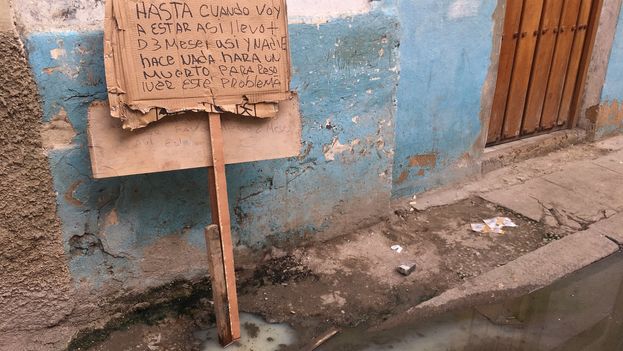
![]() 14ymedio, Havana, 9 January 2017 — The residents of a central street in Old Havana exhausted every way to get a sewer leak fixed. For weeks they had complained at the “Accountability Meetings” of the local People’s Power, reported the problem to their polyclinic, and written letters to the Havana Water Company; but the hole is still there.
14ymedio, Havana, 9 January 2017 — The residents of a central street in Old Havana exhausted every way to get a sewer leak fixed. For weeks they had complained at the “Accountability Meetings” of the local People’s Power, reported the problem to their polyclinic, and written letters to the Havana Water Company; but the hole is still there.
